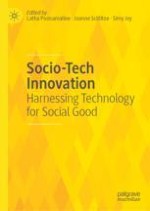2020 | OriginalPaper | Chapter
10. Lifting the Lid Off the Toilet—Understanding the Indian Context and A Case on Samagra Empowerment Foundation
Authors : Aparna Venugopal, David Foord, Muthu Singaram
Published in: Socio-Tech Innovation
Publisher: Springer International Publishing
Activate our intelligent search to find suitable subject content or patents.
Select sections of text to find matching patents with Artificial Intelligence. powered by
Select sections of text to find additional relevant content using AI-assisted search. powered by
